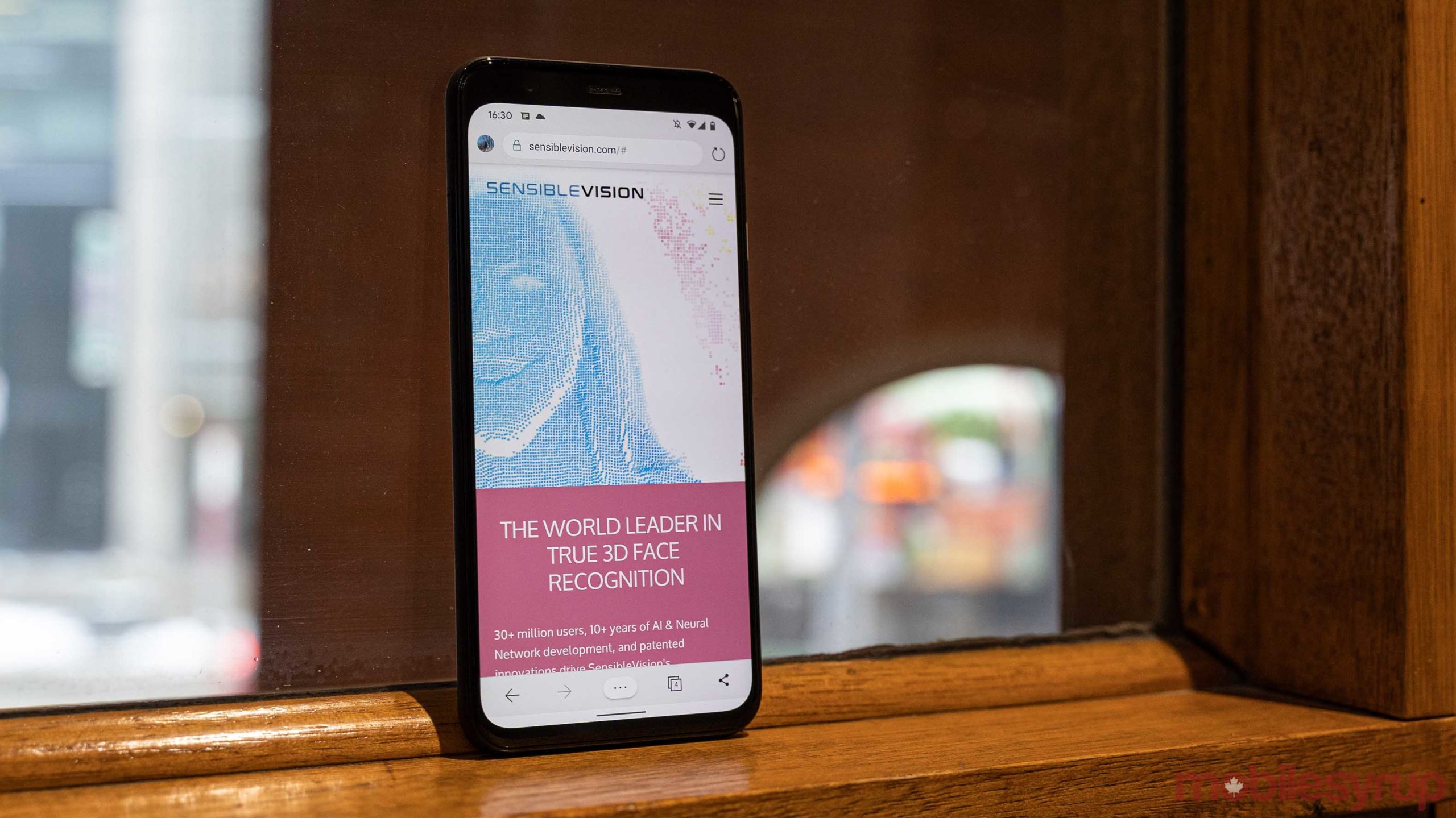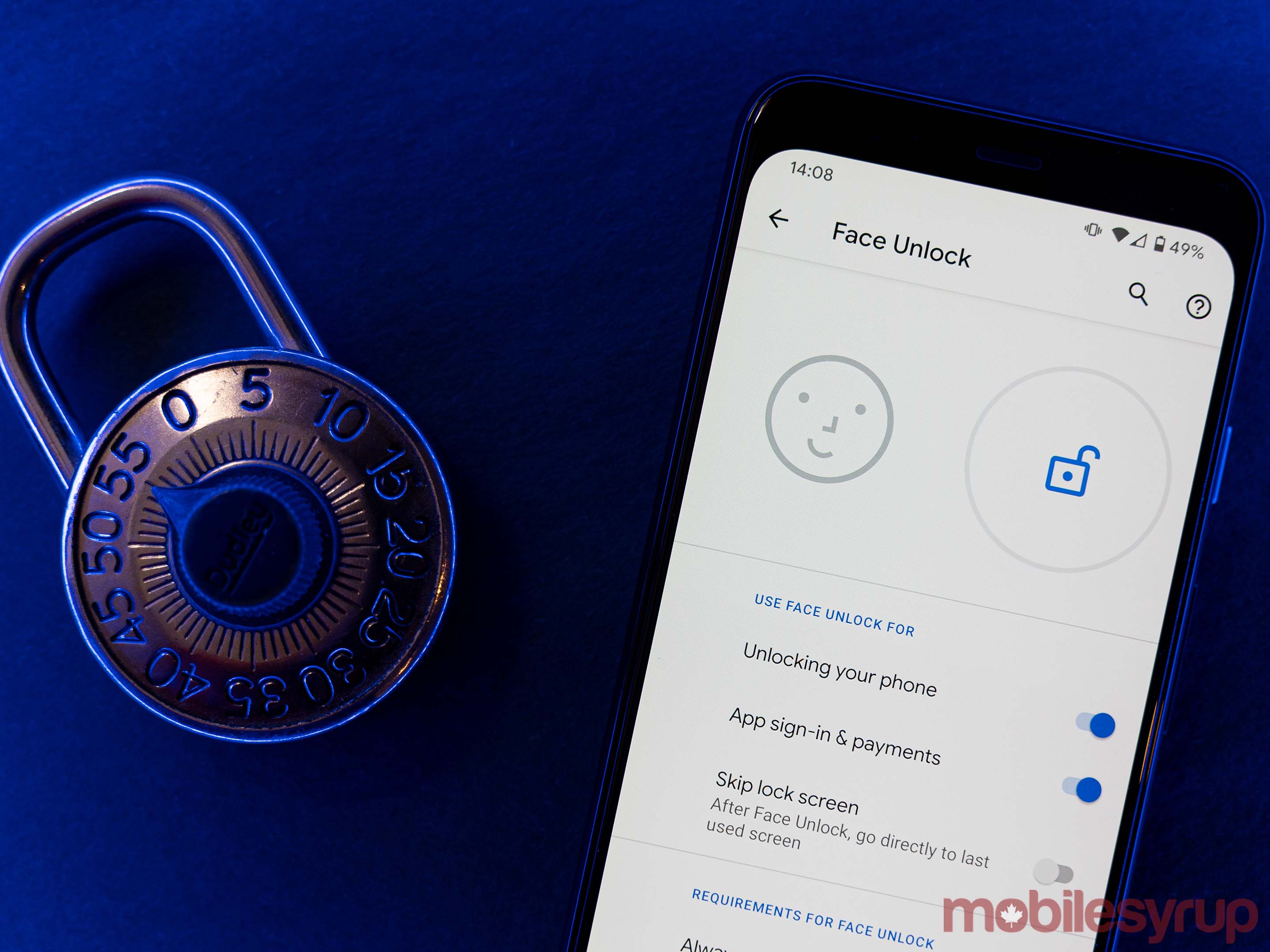
Technology companies are currently fighting for your home with smart lights, intelligent speakers and other crazy products.
One of the hottest battles, however, is for your front door. Several companies offer smart door locks with security cameras, but a Florida-based company wants to take things a step further with facial recognition.
SensibleVision, which has developed mobile face recognition technology since 2005, announced a new partnership with Inuitive, which creates 3D imaging, computer vision and deep learning chips. The partnership will enable SensibleVision to bring its 3DSafe software, fused with Inuitive’s NU4000 vision processing chip, to door locks.
Understandably, you may have some concerns about that, especially with all the privacy issues in the news involving other smart doorbells. From mass surveillance concerns to security issues and leaked data, there are a few reasons to worry.
However, when I sat down to speak with SensibleVision’s CEO George Brostoff on the phone, he assured me SensibleVision’s product was different.
Brostoff pointed to Amazon’s Ring as an example, noting that Ring doorbells have two features that create potential surveillance issues.
“First is that they’re doing things up in the cloud,” Brostoff said. “But then, Ring does something more than most cloud providers. They also [include] sharing that information with others.”
“That’s where the surveillance comes in because if they’re sharing it with a police department or something like that, then that does raise some privacy concerns.”
However, the technology that SensibleVision developed works locally, which means your door lock isn’t sending your information up to the cloud.
“Everything takes place locally, just like it does on your mobile phone, and it never leaves,” Brostoff said. “So that eliminates one of the key privacy concerns.”
The technology is already here; we need to regulate it
The thing with facial recognition technology is that it already exists. SensibleVision began developing 3D face recognition in 2009, but before then had regular 2D face recognition systems. It’s worked with companies like Dell as well as other Intel partners to include face recognition tech in PCs.
Apple also helped usher in the technology with the launch of the iPhone X in 2017, which offered Face ID — Apple’s facial recognition system — as the primary way to securely unlock the phone. Other smartphone manufacturers followed, including Google with the Pixel 4’s face unlock feature.
With that, the spectre of mass surveillance and privacy violations has grown as facial recognition systems became more popular. But Brostoff says the problem isn’t with facial recognition itself, but with how the law has — or hasn’t — adapted.

“Some of these issues are sometimes overblown and we have to take a step back,” Brostoff said. “Right now, all my neighbours… have cameras all around their houses and they’re monitoring that. You don’t need facial recognition to have recordings of all that… the technology is already there, and facial recognition by itself doesn’t actually change anything.”
Instead, Brostoff says we should focus on improving laws and regulations.
“Privacy regulation needs to cover how we use our mobile phones, how we’re tracked on our mobile phones and how microphones are used to record information,” he said.
What about biases and inaccuracy?
Another major concern when it comes to face recognition services and artificial intelligence (AI) applications like this is bias and inaccuracy.
For example, the datasets used to train an AI can impact its ability to recognize someone accurately. In the U.S., many companies rely on datasets that are predominantly white and male. When the AI then has to identify a woman or a person of colour, it can struggle.
For SensibleVision, this is something it’s spent a lot of time working on, and it has developed its own set of databases over the 15 years it’s worked on facial recognition technology.
Brostoff told me SensibleVision’s databases include people from “Asia to Africa to Europe and… Australia.”
However, he also acknowledges that there’s more to successful face recognition than diverse data — it needs quality data too.
“Part of the reason why people of colour sometimes have a hard time being recognized is that under certain lighting conditions, sometimes the face is not properly exposed,” Brostoff said.
He related it to taking a picture of someone in front of a bright window. Because of the bright background, it can turn their face into a silhouette because the camera struggles to handle the range of light.
“Some of the face recognition solutions out there try to recognize that and there’s not enough detail and they make mistakes,” Brostoff said.
That’s one reason why SensibleVision has worked to develop 3D face recognition. 3D technology uses its own illumination — for example, the infrared flood illuminator used in phones — and measures the contours of people’s faces. Brostoff says that system ensures there’s always sufficient detail to map someone’s face.
Ultimately, this makes SensibleVision’s face recognition tech fairly accurate. Brostoff says that, when measured by typical databases issued for testing by the National Institute of Standards and Technology in Washington, the accuracy measures in at one in 1 million where SensibleVision sees a false recognition.
However, Brostoff says that those testing databases aren’t representative of the real world. Instead, when SensibleVision looks at the 30 million face recognition systems it has put out over the years in PCs and laptops, it has an in-the-field accuracy rating of “better than one in 20 million.”
Expect smart door locks with SensibleVision and Inuitive technology later this year
When it comes to smart door locks, especially facial recognition door locks, you want something accurate as well as convenient. SensibleVision has the history in facial recognition to ensure an accurate system, and by the nature of using people’s faces, it’s also quite convenient.
Brostoff shared the example of walking up to your door, and it unlocks before you even reach for the handle. He also spoke about the ease of use with kids — no more worrying about your kid losing their key and getting locked out.
Plus, with an accuracy rating of one in 20 million, there’s a good chance you’ll be able to get into your house. Granted, there’s always the possibility of a failure that prevents recognition.
Brostoff says that the products SensibleVision is working on come from lock manufacturers and that “most of these companies have their names stamped on the front doors of most peoples’ homes… in North America.”
“Being lock manufacturers, they love selling what they’ve been manufacturing for hundreds of years,” Brostoff said.
So, users will have their keys still, as well as another form of backup like a fingerprint reader or a PIN system to get in if the locks don’t recognize them. Plus, the lock systems will have batteries to keep them running even if there’s a power outage.
And while Brostoff couldn’t name which companies SensibleVision was working with, he did say that we could expect products at the end of 2020 or in early 2021 in both Canada and the U.S.
MobileSyrup may earn a commission from purchases made via our links, which helps fund the journalism we provide free on our website. These links do not influence our editorial content. Support us here.


